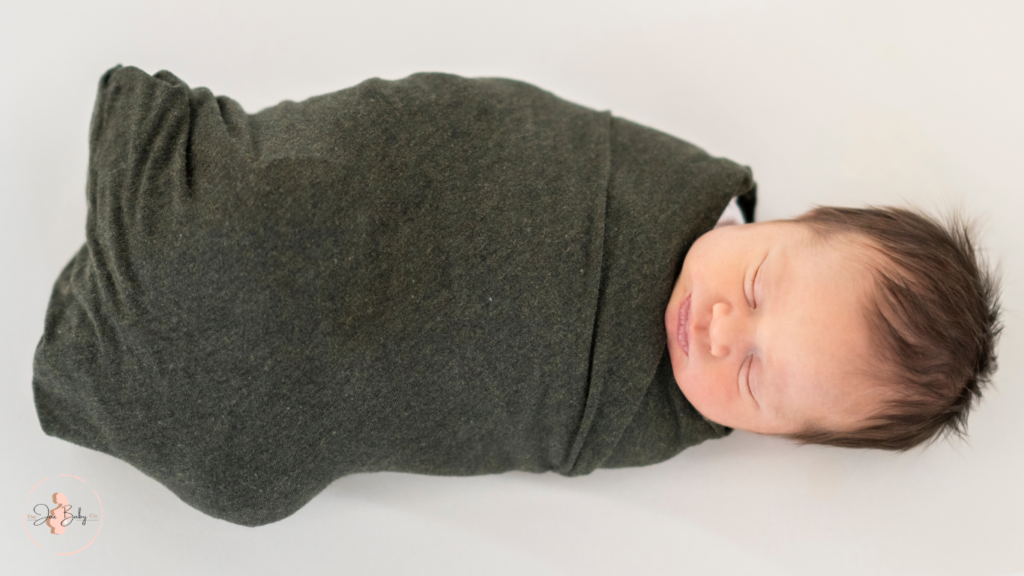
The Magic of Swaddling | A Parent’s Guide
The magic of swaddling is in the why and the when! In all my years as an infant care specialist I’ve heard all sorts of reasons for not swaddling newborns. I’ve heard everything from, the most common, “my baby hates it,” to the first runner up “she just breaks out of it,” to the second runner up, “I don’t want her to depend on it”, to “I worry it’s too hot for her”. I’ve decided today is the day to give you all what you need and want to know about the magic of swaddling. Who knows maybe we will even make a YouTube video!
Why Swaddling Is Magical!
Swaddling and giving a pacifier are two simple, but powerful ways that usually work to soothe a fussy baby. It can help calm them without being held when you want or need your arms free, which is super nice and needed sometimes! Seems like a no-brainer to me, but let’s dig a little deeper.
Babies are held tight and kept warm in the dark and weightless womb for their entire existence until one day they make their journey earthside. Born into a world of lights, sounds, fluctuating temperatures, and the gravity of the world they will now live in. I don’t know about you, but a snuggly womb-like place sounds magical to me!
Newborns have several reflexes, one being the Moro reflex (the startle reflex) and they don’t usually outgrow it until about 4 months old. Infants who startle will wake themselves up. So, swaddling helps to suppress that reflex and allows for infants to get to sleep and stay asleep better.
Swaddling is one excellent sleep cue for your newborn! Think of cues as you and your baby’s own language! Do you see the magic of swaddling here?
Baby- “WAAAAAHHHH!” Translates to, “I’m overtired! I’ve been trying to tell you with my red brows and subtle looking away that I am sleepy! Now I’m pissed!”
Parent- “Are you wet? Maybe it’s gas. You’re probably hungry you fell asleep during your last feeding, but you nursed for like 40 minutes.” Translates to, “I am doing all the things, you’re is still crying, I must be doing something wrong.” Translates to, “GooGoo, HooooDIIII, HUm????”
Baby- “WWAAAAHHHHH” = “I just want to feel warm, secure, and sleep. I see you trying. Why can’t you understand what I’m saying?”
Enter the swaddle!
Baby- “Thank you, I love you. ZZZZZZZZZ.”
Parent- “Wow, I don’t know what that was, but I am glad you’re happy and peaceful now. This swaddle really is magic! I love you so much sweet baby.”
The Magic of Swaddling is Also in the “When” and the “When to Stop”
When to Swaddle:
- Swaddle from the time they are born until they begin to show signs of rolling over. Your baby should never sleep face down and swaddled. Babies who can roll onto their sides and tummy should not be swaddled with arms in, ever.
- Swaddle when they show early signs of being sleepy, bust out the swaddle! Pay close attention to those wake windows so your baby isn’t overtired:
- 0-4 weeks old: 30-60 minutes awake
- 4-12 weeks old: 60-90 minutes awake
When to Stop:
- Stop swaddling when they begin to show signs of rolling over. This can begin as early as 2 months old but the average time to stop swaddling is between 2-3 months old.
- Showing signs of readiness= time to begin transitioning them out of the swaddle!
- Have begun rolling= time to remove the swaddle immediately!
- Stop swaddling when they’re awake. All awake time should be spent un-swaddled so they can develop gross motor skills. Also spend some amount of tummy time at each wake window (this can be as little as 2-5 mins on a parent’s chest)! Feedings count as awake time, there for your baby should be un-swaddled for feeds.
- In my opinion (and it is just that) there are exceptions to the rule, one being that if your baby is making all weight checks, is having enough wet and dirty diapers, is feeding well (every 2-3 hours) during the day, and is finishing feeds that they initiate at night you can keep them swaddled, but be mindful of pacing their feed.
- Stop Swaddling if your baby is consistently breaking out of their swaddle every night and you have made sure to get it as secure as possible. Because if your baby is busting out this means you have loose blankets in the crib, which is a no-no by the American Academy of Pediatrics. It’s time now to either stop swaddling or to switch to a safer option, an arms out sleep sack.
- If you want to begin sleep training, transition or stop swaddling first.
Final Thoughts
When it comes to the magic of swaddling I can’t stress enough to practice, practice, practice! Practice on a doll, practice on your dog/cat (if they’ll allow it), practice on your friend’s babies! Just practice! In our Newborn Care Class and we cover several ways to swaddle, show you different swaddles, and help you feel more confident in your skills. Oh, and when you are at the hospital ask your nurse to give you a refresher, Infant Care Specialists like us and nurses are swaddle masters, I promise!